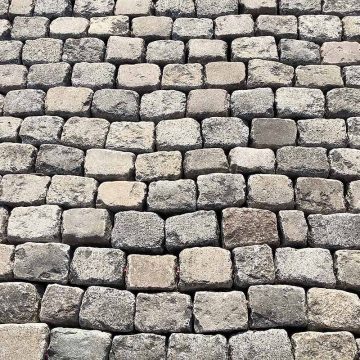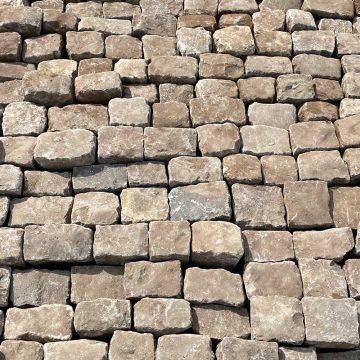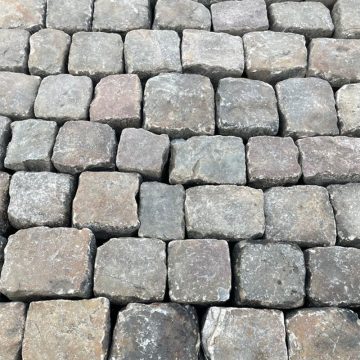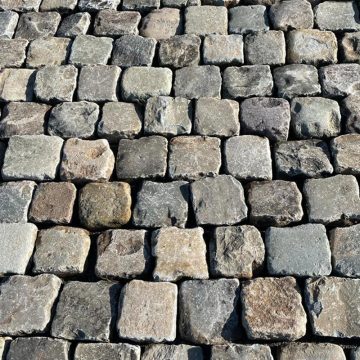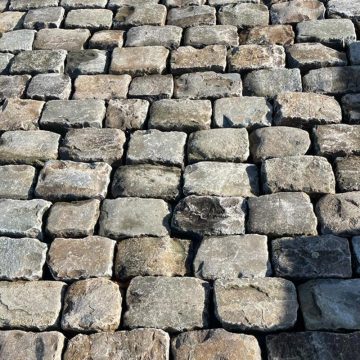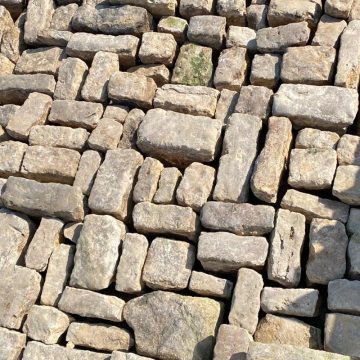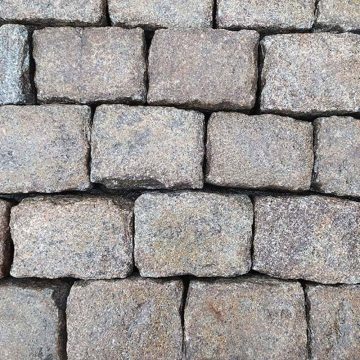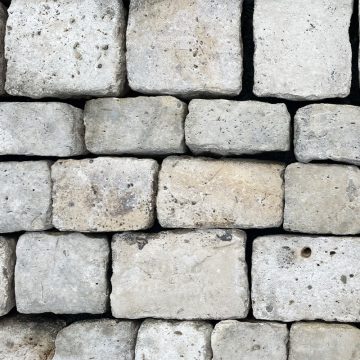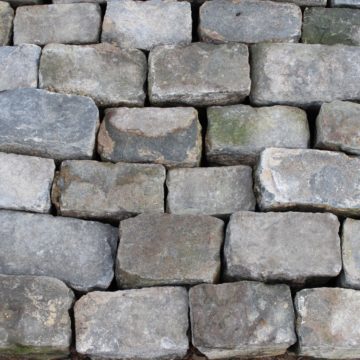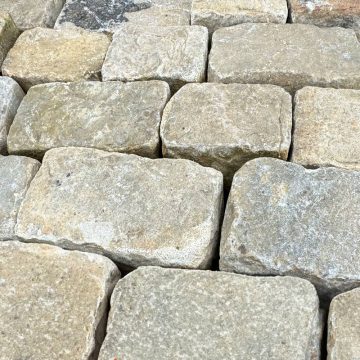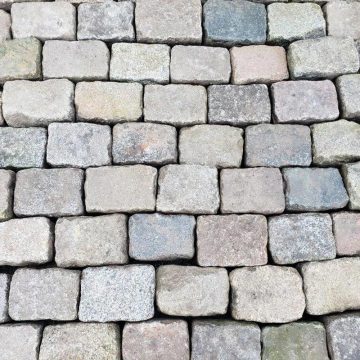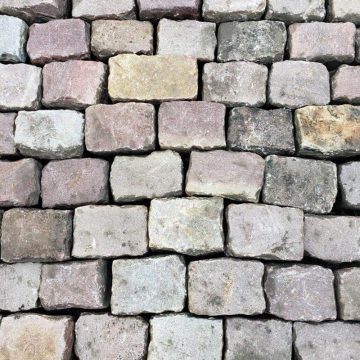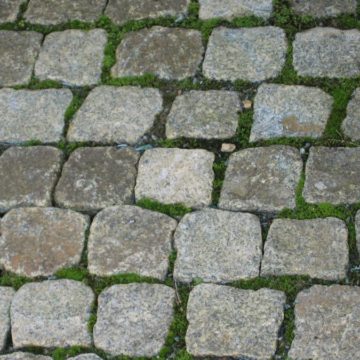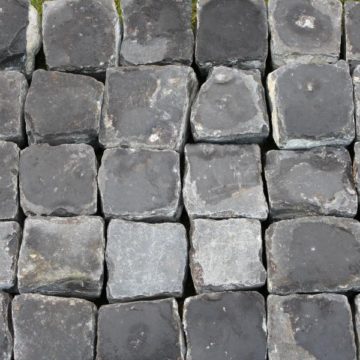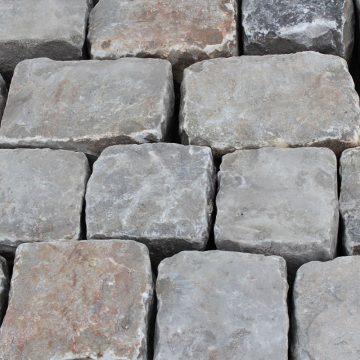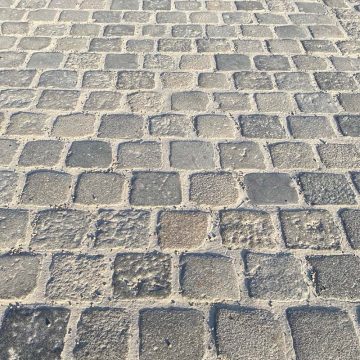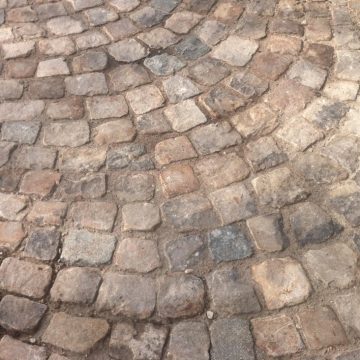Reclaimed cobbles
BCA reclaim, stock, & supply genuine reclaimed cobbles and paving (and flagstones, steps and reclaimed kerbs) in classic stone such as French limestone, sandstone, gritstone, granite and basalt. Virtually everlasting, like those pavers still in situ in France’s ancient courtyards & Parisian boulevards.
Reclaimed cobblestones
Stone paving and setts have been important for BCA Antique Materials and their clients from the start of the business in the early 1990s, and are always available in stock in vast quantities. BCA Matériaux Anciens are close to the French demolition industry, vital for a fast reaction time to source and save paving about to be removed for re-development of, for example, railway station yards, factories and military barracks from the 19th century. This is important when larger paved expanses, often public or government owned, are to be either ripped up for being built over, or re-paved in a more user-friendly way with smoothness an important criteria for walking and wheelchair accessibility. This means that when the new functions of the exterior spaces being created do not permit the more uneven antique materials being retained, BCA Antique Materials’ clients can happily re-use them on their projects. It is also gratifying when historic streets are restored using genuine reclaimed paving, rather than new stone paving. Everyone will have observed re-paved streets and pedestrian zones that have aged very badly and waste resources, which is such a shame. Re-use genuine paving, as it is such an appropriate solution.
Reclaimed Granit cobbles
When we know the provenance of the reclaimed paving and setts in stock we inform the client, and when appropriate actually indicate provenance in the text of the reference’s description on this stock website. It is well known that these very thick cobbles and street setts were laid traditionally by bedding them down into a bed of sand or other cheap bedding material. They would be bedded close alongside the neighbouring stones, thereby creating a robust street level with them all wedged against each other without wide joints. Nowadays they are often re-laid traditionally with or without jointing them. Builders are laying them on a bed of cement or lime-based sand mortar that sets. If very heavy vehicle traffic is anticipated then building regulations in some countries may require a reinforced concrete slab below them. Let common sense prevail and if possibkle consult local experienced masons accustomed to re-laying antique cobbles and setts. However “it ain’t rocket science” so getting it right shouldn’t be an issue.
Reclaimed Sandstone cobbles
In this section you will also find some new “antiqued” options which can prove appropriate for many projects where the authentic historic aspect of genuine reclaimed cobbles and setts is not required. Many new stone options are thinner, so cheaper to transport and install, and are usually more economic than the thicker antique reclaimed paving. However our antique reclaimed limestone cobbles and setts can be sawn down to a relatively even thickness of say 3cm (just over 1 inch). We find cutting down granite and gritstone to be unviable for sawing down thinner, as the density is significantly higher. This makes the specialist cutting slow and over-expensive.
All things being considered, clients and their professional advisors weigh up the pros and cons technically and visually, and compare their relative prices in order to make their selection. They are being re-used for courtyards and driveways, streets in “quartiers historiques”, garden pathways and edging, boot-rooms, wine cellars and greenhouse floors, classic car museums and private collections etc. We love ’em.

